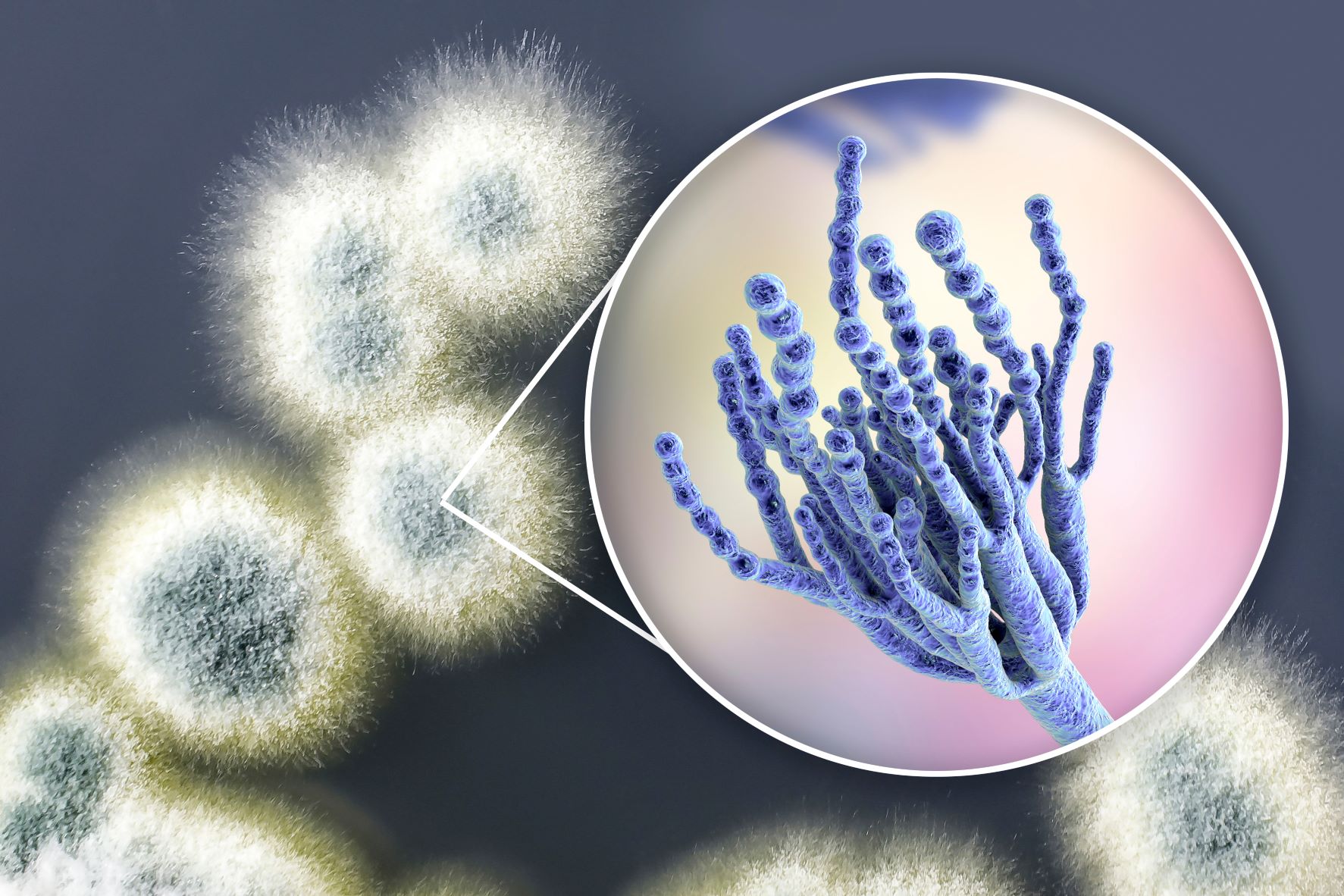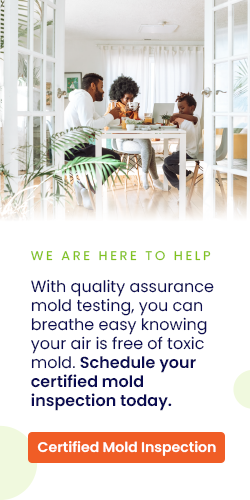According to the US Centers for Disease Control and Prevention (CDC), mold is “very common” in homes and buildings. In fact, one study found mold in literally every public building included in the research – an average of 14 instances each. Despite mold being considered somewhat normal, that doesn’t mean it’s healthy. In fact, some mold can produce mycotoxins which lead to allergic reactions and more serious mold illness. What might start out as minor breathing issues can turn into bronchial and fungal infections, like allergic fungal sinusitis. So which mold is bad mold? Which produce mycotoxins and cause mold illness? Let’s discuss.
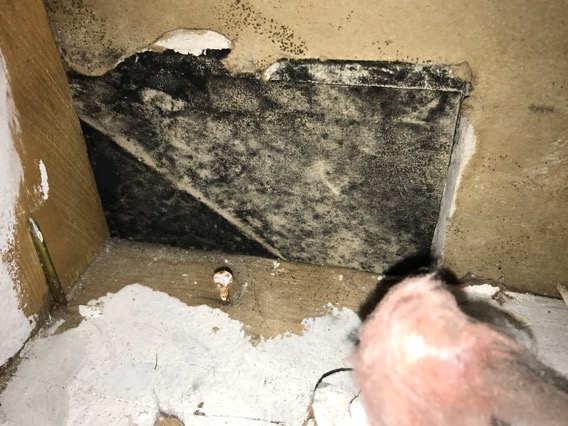
How Does Mold Illness Occur?
There are hundreds of thousands of different molds, but all are a form of fungus. Mold spreads by producing spores that float through the air, indoors and outdoors. There’s no way to prevent spores as they can live even in places where actual mold can’t grow. However, mold thrives in warm, moist areas. It can grow on many surfaces, from wood and paper to glass and plastic.
Mold can enter your home or office by being carried through the air or by attaching itself to the objects or people that enter the building. Mold will only flourish if the environment is suitable for growth. For example, areas that lack air circulation, windows that have a lot of condensation build-up, or buildings that are prone to flooding are perfect breeding grounds for mold.
Once mold grows, it can cause health problems. You get mold illness by touching or inhaling mold spores. Most notably, you may start experiencing allergy-like symptoms. These symptoms are centered around your skin and respiratory system, as these are the areas coming into immediate contact with the mold.
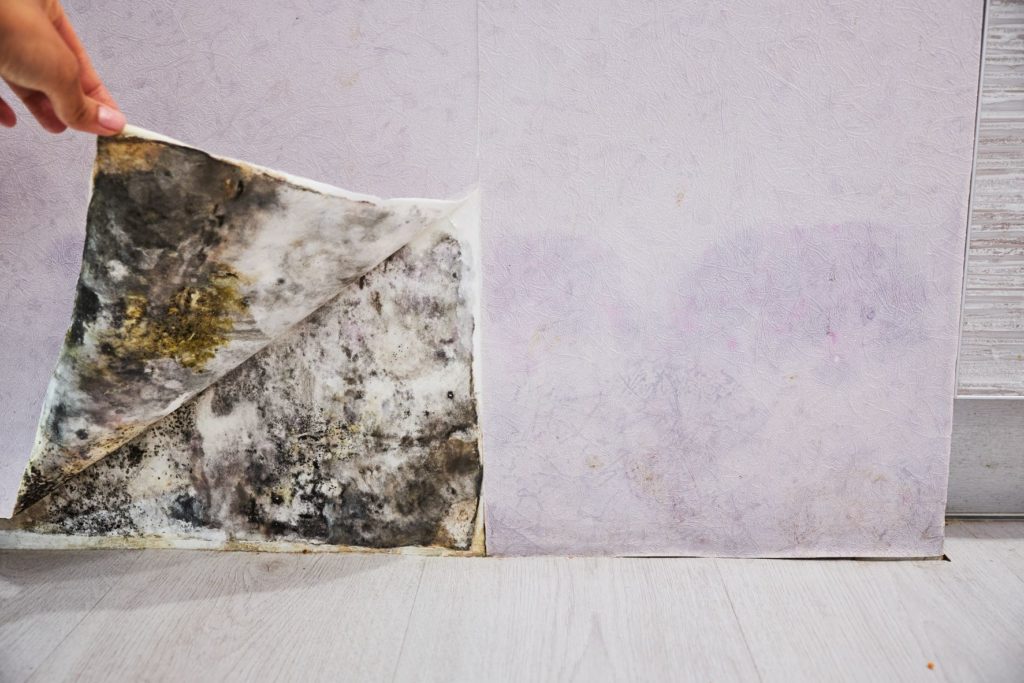
Molds and Mycotoxins That Cause Mold Illness
Not all molds make you sick. The molds you need to be aware of are those that are toxigenic. That means they produce mycotoxins, which can potentially cause serious health complications.The following are the most common types of mold that can cause adverse health effects.
- Stachybotrys Chartarum
Stachybotrys chartarum is likely what you think of when you hear the word “mold” – it’s
black mold. It’s often found on fiberboard, drywall, and paper because it grows best on
surfaces with high cellulose content. Despite its name, it can appear greenish-black.
While this type of mold isn’t dangerous itself, it does release harmful mycotoxins. - Aspergillus
Aspergillus is unique in that it doesn’t need a lot of ventilation, which helps it thrive in indoor spaces. You’ll often find it in basements and attics, especially on walls or fabrics. It can also form on dry foods. It can be white, gray, or green, but generally has dark spots and looks powdery. - Penicillium
Penicillium thrives best in particularly moist areas. It’s often found in basements, under
carpets, or in insulation, especially if there’s been water damage to the area. It appears
fuzzy and yellow, blue, or green in color. - Cladosporium
You can find Cladosporium in both cool and warm environments. It often grows on
fabrics, carpets, and wood. It’s also commonly found in cooling and heating ducts. This
type of mold is brown, black, or green. - Alternaria
Alternaria is less commonly found indoors, but can still make its way there. It often
appears on wallpaper or fabric near air conditioners and windows, especially in kitchens
and bathrooms. It appears fuzzy and white with black spots.
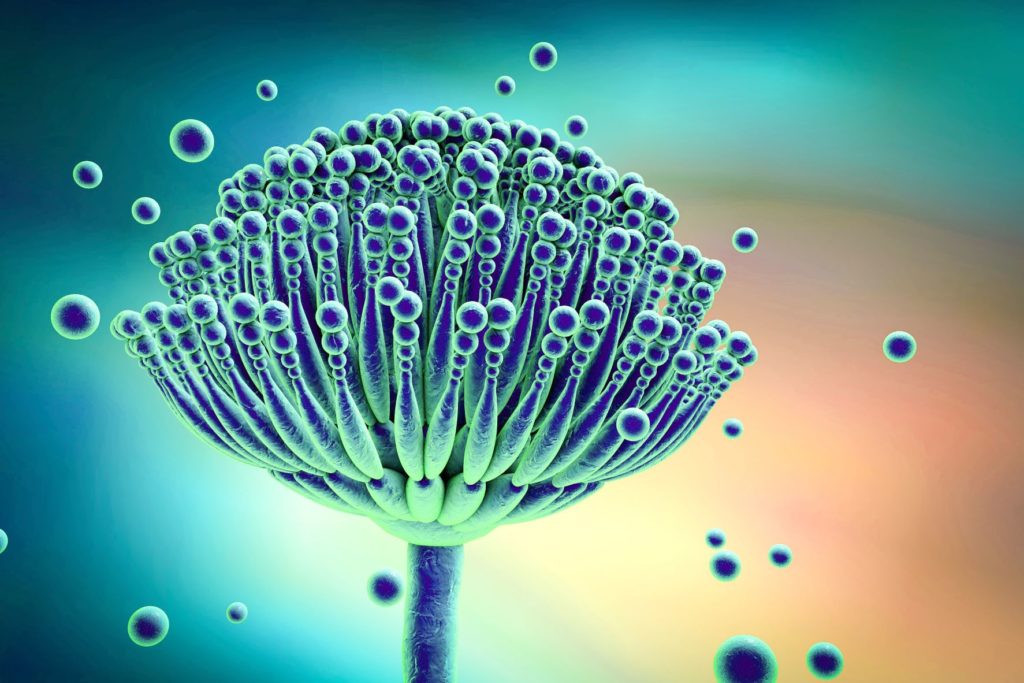
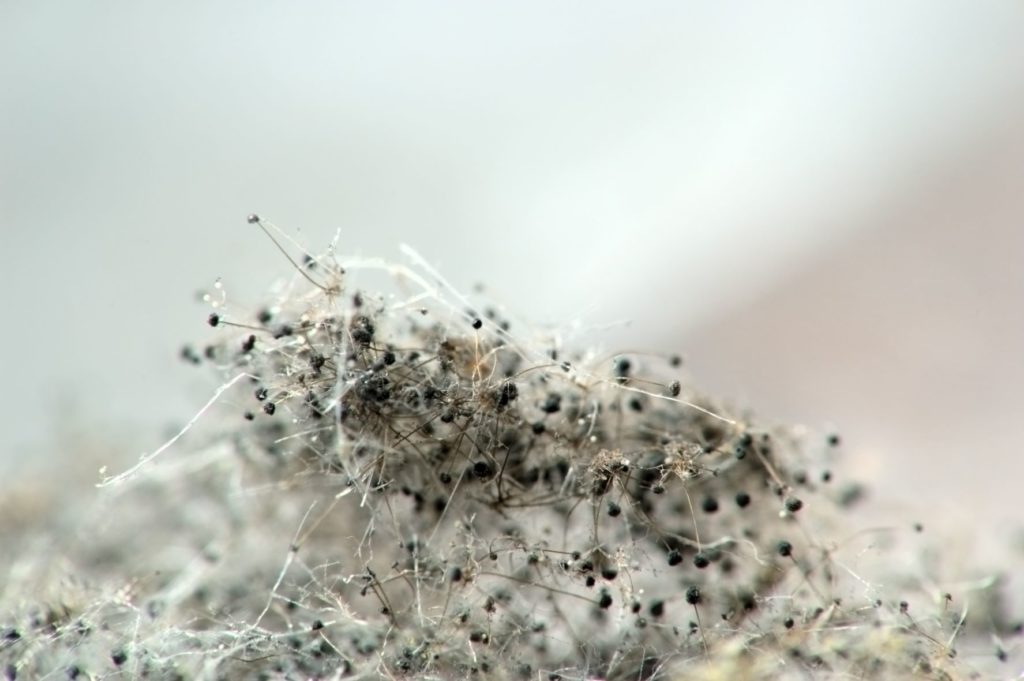
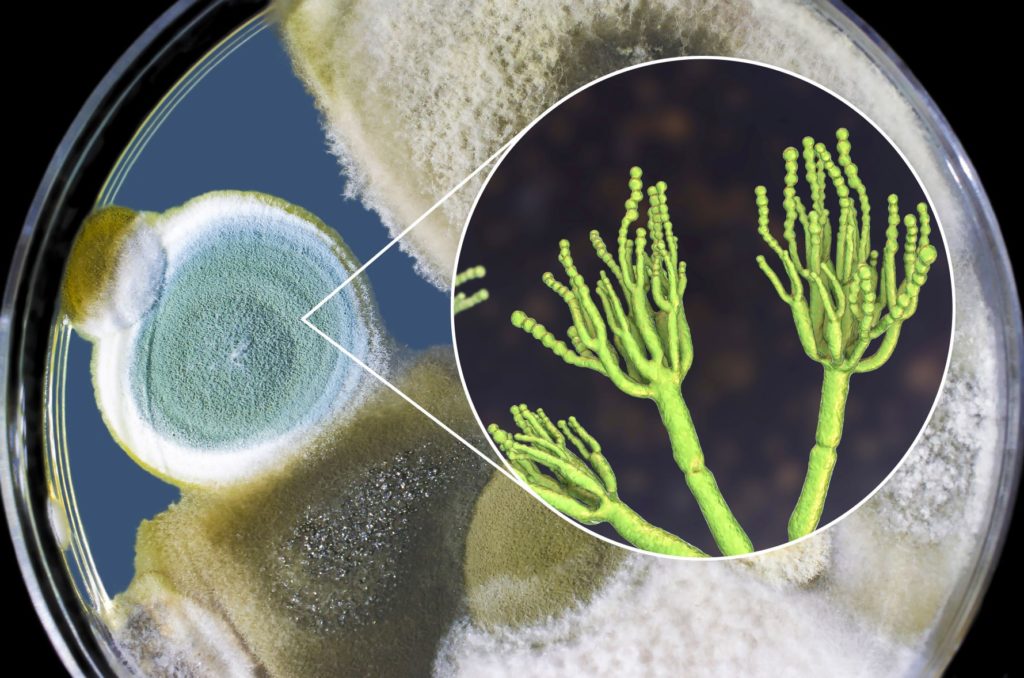
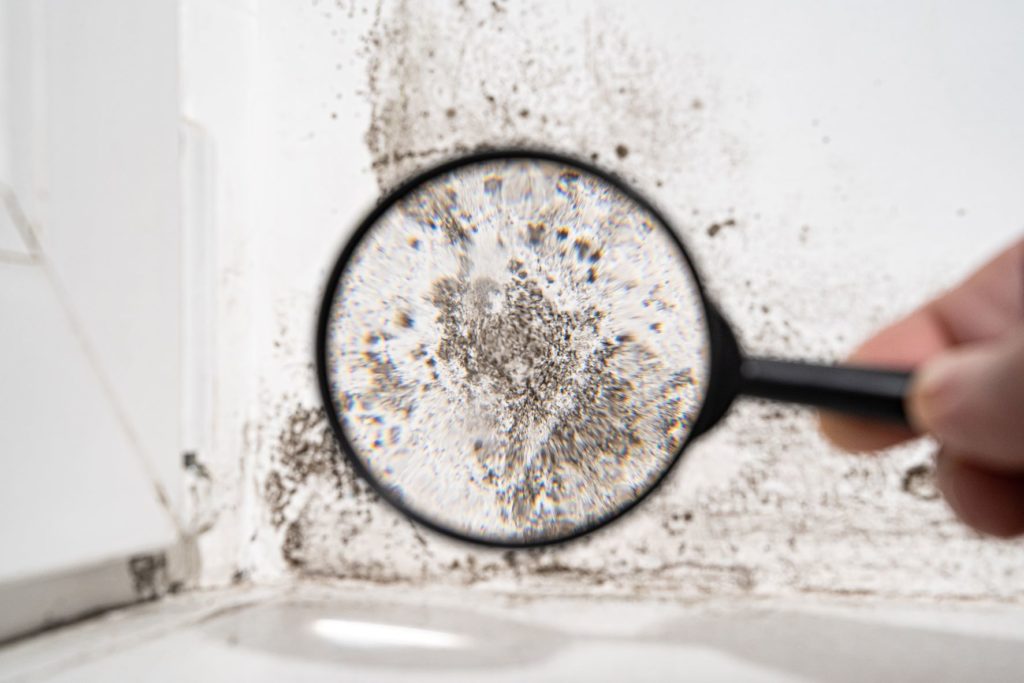
What Are the Symptoms of Mold Illness?
Short-term exposures to mold, even those that release mycotoxins, generally don’t cause any harm to the average healthy person. However, long-term exposures, like those you experience when working or living in a building, can be more dangerous.
Mold illness typically comes with the following allergy-like symptoms:
- Eye irritation
- Sore throat
- Coughing
- Wheezing
- Sneezing
- Congestion
- Runny nose
- Lung irritation
- Headache
- Skin rash

Mycotoxins from mold can lead to more serious health complications, like infections. You can also experience hypersensitivity pneumonitis, which is a serious reaction that typically occurs from a large exposure in the workplace.
Although there are no conclusive studies connecting mold exposure to more severe conditions, like dementia, there is some evidence from case studies that suggest otherwise. These studies indicate that for more susceptible people, mold exposure could contribute to cognitive impairment. At the very least, people report fatigue, inability to focus, and headaches after long-term mold exposure. It’s also important to note that other risk factors can increase your risk and severity of mold illness. This includes:
- Dust: Having a high volume of dust in your home or office increases the risk of dust mites, which then increase the chances of allergic reactions. In combination with mold, this can create more severe symptoms.
- Asthma: People with asthma may have a higher chance of an asthma attack if there’s mold in their environment.
- Underlying conditions: If you have an underlying condition, like pulmonary disorder, lung disease, or immune suppression, you’re more susceptible to fungal infections.
- Career: Some jobs increase your likelihood of mold exposure. This includes farmers, woodworkers, lumber millers, and winemakers.
- Building conditions: Buildings with poor ventilation or more than 50% humidity are at higher risk of mold growth, as are buildings that have been flooded or have leaky pipes.
How Can You Detect Mycotoxins and Mold?
You can visually spot mold based on its appearance. It may look powdery, velvety, or cottony. It can also be a variety of colors, from white or black to green and spotted. There are other telltale signs, including:
- An earthy, musty smell
- Warped, peeled, or cracked surfaces
- A suspicious growing spot (old stains will remain the same size, while mold grows)
- A lack of sunlight
- A nearby source of liquid or moisture
Indoor mold can be dangerous. It can lead to serious mold illness and potentially even contribute to dementia. If you think there may be mold growing in your home or office, give IndoorDoctor a call. We offer independent certified mold investigations to confirm or deny the presence of toxic mold. If it is present, we identify the type and concentration. We’re not affiliated with remediation, so we have nothing to sell – we simply want to give you the answers you need to create a healthy living environment. Our mold investigation also comes with a custom report from an accredited environment that identifies the root cause of the mold, so you can correct the issue, remove any mycotoxin causing molds and get back to breathing easy. Learn more about our certified mold inspection services here or contact us today!
Sources:
Extent of moisture and mould damage in structures of public buildings | Science Direct
Basic Facts about Mold and Dampness | CDC.gov
Is Mold in Your House a Problem? What you Need to Know
Mold: Symptoms of Exposure, Risks, and More | Healthline.com


